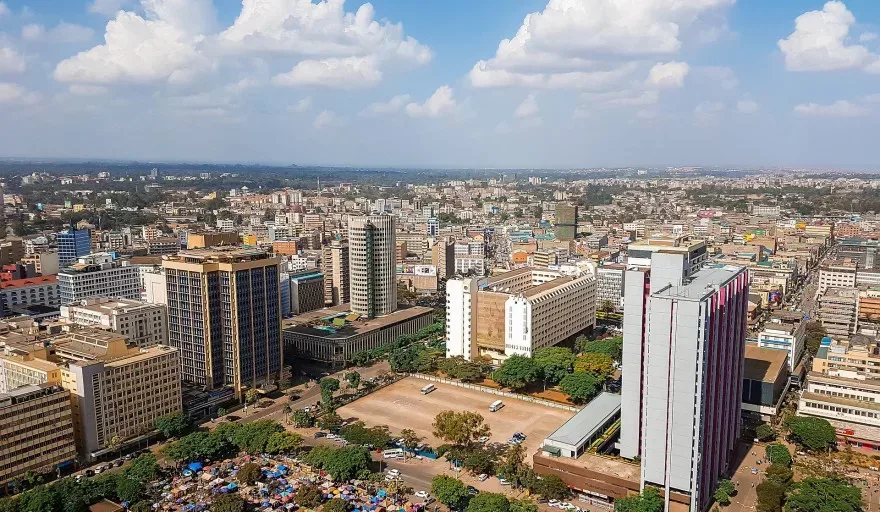With a huge tourism industry, Kenya was one of the worst hit African nations by COVID-19, but plans are underway that aim to reinvigorate the economy.
THE COUNTRY WITH A COVID PLAN
According to the World Economic Forum, Kenya and Gambia rely on tourism for nine and 20 percent of their respective GDPs.
COVID-19 has caused the complete halt of various industries across the globe. None, however, have been as negatively affected by the spread of the virus than the travel and tourism industry. For many African countries this has posed a major problem.
Until recently, travel and tourism has been a large and productive industry for the whole African continent. Before coronavirus, Africa offered a limitless variety of holidaying and exploration experiences for the seasonal tourist, from urban city visits and street markets, to tropical coasts, jungle hiking adventures, and exotic safari resorts.
Growing from the branches of this industry are smaller businesses that thrive off the tourism season. The bulk of business revenue, and consequently that of the individual worker’s income, is gained from tourists who are willing to spend their money abroad on African wares and services sold by such businesses.
But with the upset caused by the pandemic still hanging over the industry, profit has fallen drastically to the point at which many businesses can no longer keep their workforce in employment.
According to the World Travel and Tourism Council, tourism may lose 120 million jobs worldwide due to the pandemic, and the number of tourists travelling abroad is estimated to cut in half during 2020. This will lead to more than $3 trillion being stripped from global tourism GDP.
For Kenya, the nation and its government have been forced to go to huge lengths to restabilise its society and industries in the wake of the pandemic.
The Kenya National Bureau of Statistics found that unemployment had doubled from 5.2 percent (March) to 10.4 percent (September) in 2020.
THE RESPONSE IN KENYA
According to World Economic Forum figures, tourism revenue provides a living to around 10 percent of Kenyans and nearly a fifth of Gambians, while acting as an important source of foreign exchange. Tourism makes up the second largest industry for both Kenya and Gambia (coming after the agriculture industry that dominates general African GDP).
However, these countries (as well as the rest of the continent) have risen to the challenges.
In Gambia, tour guides who have been hit hard by the pandemic are being redeployed as coronavirus guides for their local communities. They inform urban and rural communities, raising awareness regarding hygiene methods and prevention steps (such as social distancing) to lessen the spread of COVID-19.
As for Kenya, its government has provided financial aid to those members of the industry most affected. In the Seventh Presidential Address on the Coronavirus Pandemic (23 May 2020), President Kenyatta highlighted the government’s attempts.
One example of this is through the economic stimulus programme that has provided food relief and direct cash transfers to families.
The cash transfers have sent 250 million shillings (around $2,300,000) to the total amount of targeted families each week, money that has kickstarted local economies and prevented the reduction of spending, allowing local economic systems to pick back up.
On top of this, the Kenyan government is currently engaging the younger Kenyan generations with the National Hygiene Programme – Kazi Mtaani Initiative. Through this programme, 10 billion shillings (around $92,000,000) will be invested to restore standards of public hygiene, urban civil works, and alternative undertakings. The aim of the government is to increase the engagement of 26,000 of the younger generations to 200,000 across Kenya.
In addition to these plans, the president declared an Eight-Point Economic Stimulus Programme. This will see a total of around 53.7 billion Kenyan shillings (around $495,000,000) aimed towards helping families and companies as the country seeks its way through the coronavirus problem. This programme is aimed to build Kenya up and continue growth through the difficulties posed by the pandemic.
Kenya, like every impacted country, still has a way to go before economic recovery takes hold. However, if these plans show anything, it is that the country is taking proactive steps towards overcoming the consequences of the pandemic and revive the livelihood of the Kenyan people and its industries.
THE EIGHT POINT ECONOMIC STIMULUS PROGRAMME
Tens of billions of Kenyan shillings will be poured into each of the following eight categories of industry required to get the country back on track:
- Local labour: to hire local labour to fix and maintain access roads and footbridges.
- Education: to hire 10,000 teachers and 1000 ICT interns to help with the support of digital learning.
- SMEs: VAT refunds for small and medium scale enterprises.
- Healthcare: to expand bed capacity in hospitals, as well as hiring 5000 new healthcare workers with a diploma/certificate level qualification for one year.
- Small scale farmers: to assist producers through establishing connections to international markets.
- Tourism finance: soft loans for hotels and related establishments to support the industry.
- Water management: Flood control measures, as well as the rehabilitation of wells and waterworks for arid regions.
- ‘Buy Kenya Build Kenya’: reinforce Kenyan industry through purchasing locally manufactured vehicles.































